Until shortly before his death in 2007, Marshall Rogers drew a bunch of cool Batman stories and even elevated some weaker ones with his clear, smooth lines, yet he is mostly remembered and beloved for a relatively short run way back in the late 1970s. This can be seen as a sign that Rogers’ talent peaked early in his career, but I think that it’s more a case of those older comics being just perfectly suited for him to kick major ass!
Marshall Rogers’ first Batman story was ‘Battle of the Thinking Machines’ (cover-dated April 1977). It pitted the Dark Knight against the Calculator in the culmination of a bizarre crime spree the latter had been perpetrating in the backup features of Detective Comics for months, which had included attempts to steal the life of a scientist, to steal all of Star City, to steal the Elongated Man’s fame, and to steal the final game of the World Series, as well as to skyjack Hawkman, because comics. The story was as silly and harmless as it sounds, but Rogers knocked it out of the park with his inventive angles and stylish designs:
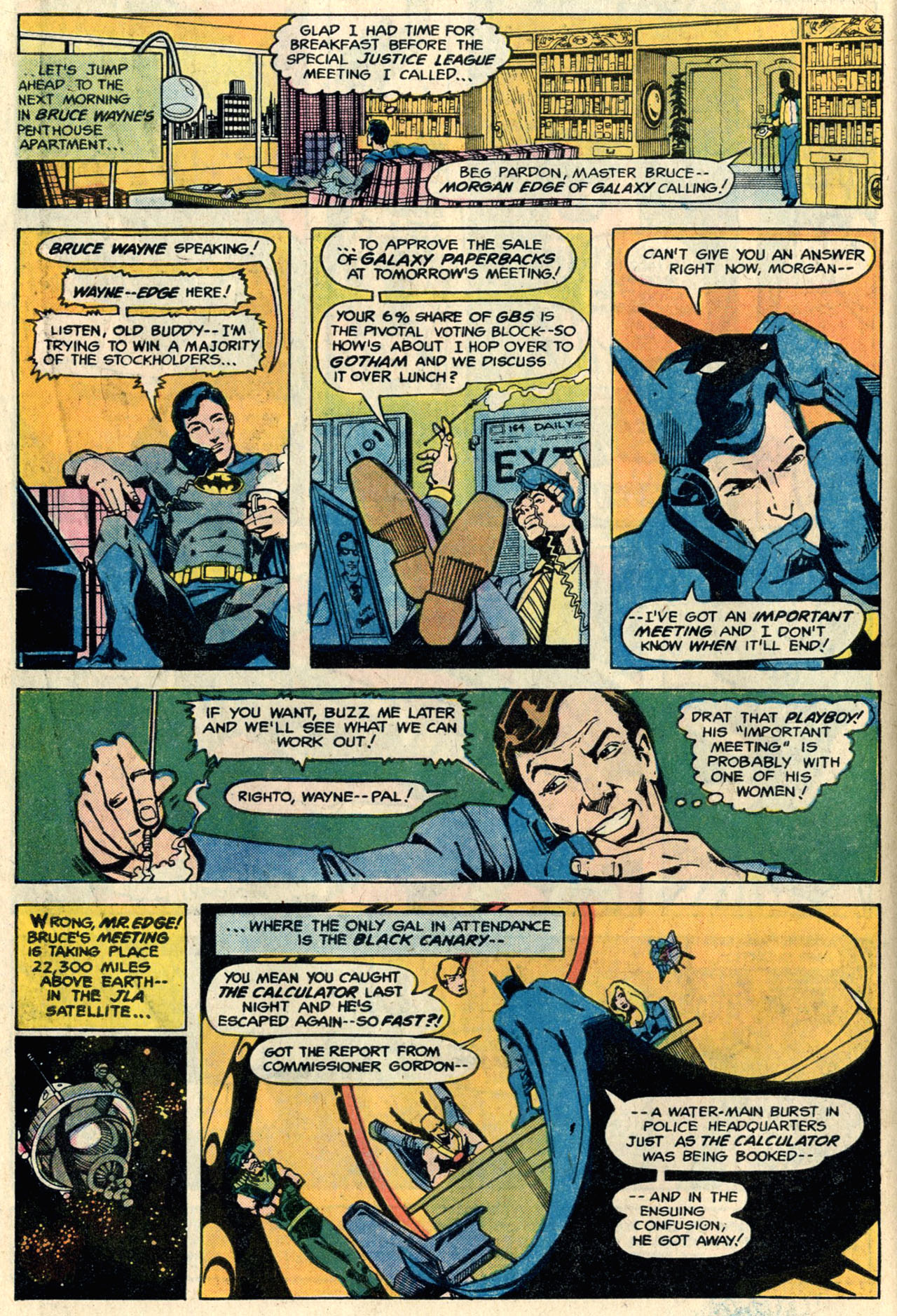 Detective Comics #468
Detective Comics #468
Rogers followed this with his fondly remembered, critically acclaimed, and all-around legendary run in the Man-Bat backups of Batman Family… Just kidding, that has been deservedly forgotten! By contrast, Marshall Rogers’ partnership with Steve Englehart in Detective Comics #471-476 is the stuff that geeky dreams are made of.
I really cannot say enough good things about this run (I’ll let someone else say them for me). Steve Englehart had a knack for characterization and for weaving subplots in which the various members of the supporting cast actually interacted with each other in meaningful ways, rather than just bouncing off of the Caped Crusader. This gave the series a richer, world-building atmosphere at a time when most Batman stories were completely autonomous, one-or-two issues long, and consequence-free.
Rogers was clearly in top form here, but he was only one element of the lightning in a bottle. He and Englehart formed a great team (they also worked together on a revival of Mr. Miracle, which they sneakily advertise in a poster in an alley in the background of Detective Comics #472). Englehart’s scripts were full of fantastic ideas and details, allowing Marshall Rogers – helped by Terry Austin’s inks and Jerry Serpe’s colors – to lend his sexy, elegant style to all sorts of awesome visuals, like the inside of Bruce Wayne’s head…
 Detective Comics #471
Detective Comics #471
…the Dark Knight facing Professor Hugo Strange’s monsters, like way back in the first issue of Batman…
 Detective Comics #471
Detective Comics #471
…Batman’s first properly fleshed out, non-villainess love interest, Silver St. Loud, with whom Bruce has a refreshingly mature relationship…
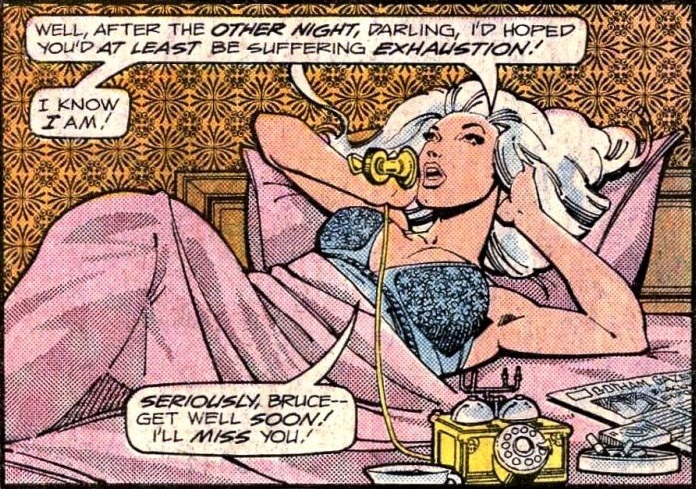 Detective Comics #471
Detective Comics #471
…an auction where we get revealing glimpses of rogues bidding to find out Batman’s secret identity…
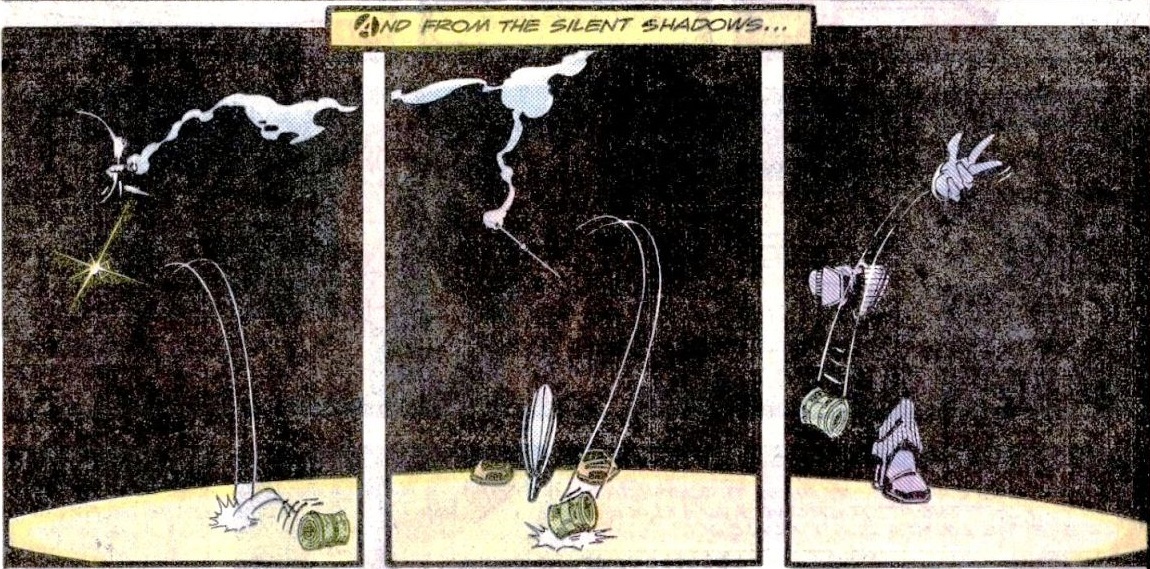 Detective Comics #472
Detective Comics #472
…the Caped Crusader fighting Deadshot for the first time in almost 30 years, now with a Rogers-designed futuristic costume (which has more or less lasted to this day), on top of a Golden Age-style giant typewriter from Weisinger Office Suppliers, in a scene that cleverly juxtaposes the two eras…
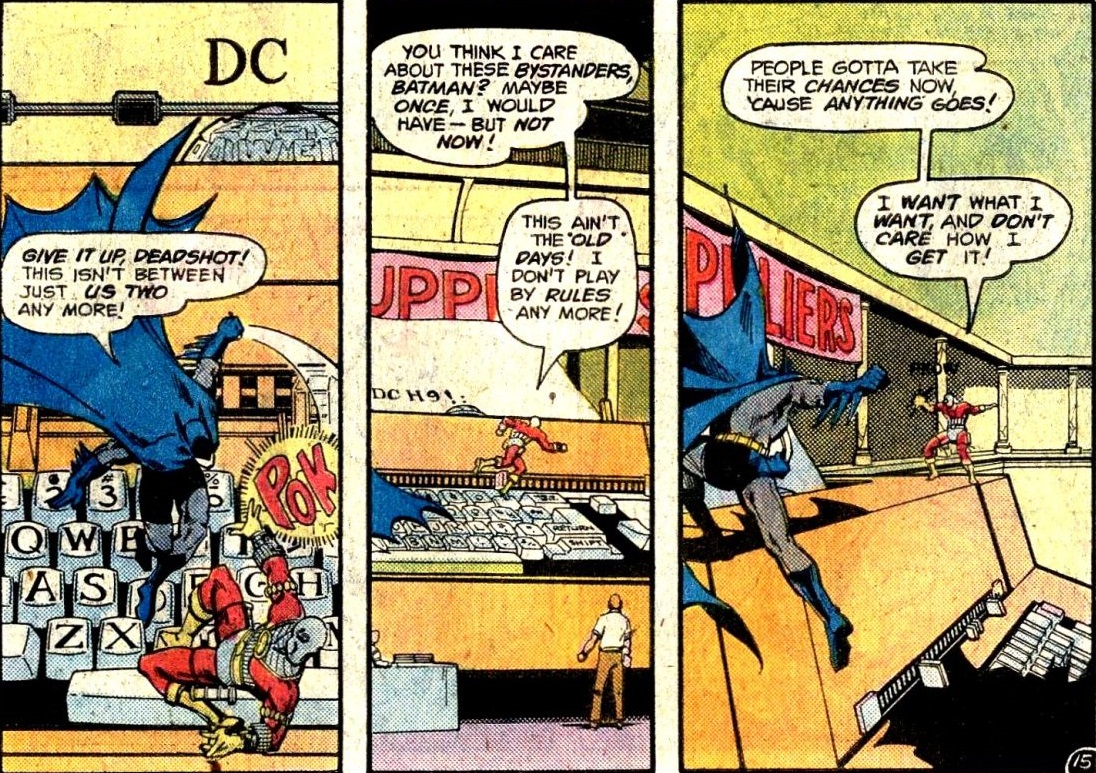 Detective Comics #474
Detective Comics #474
…and just the best damn Joker story of the Harlequin of Hate’s very long career:
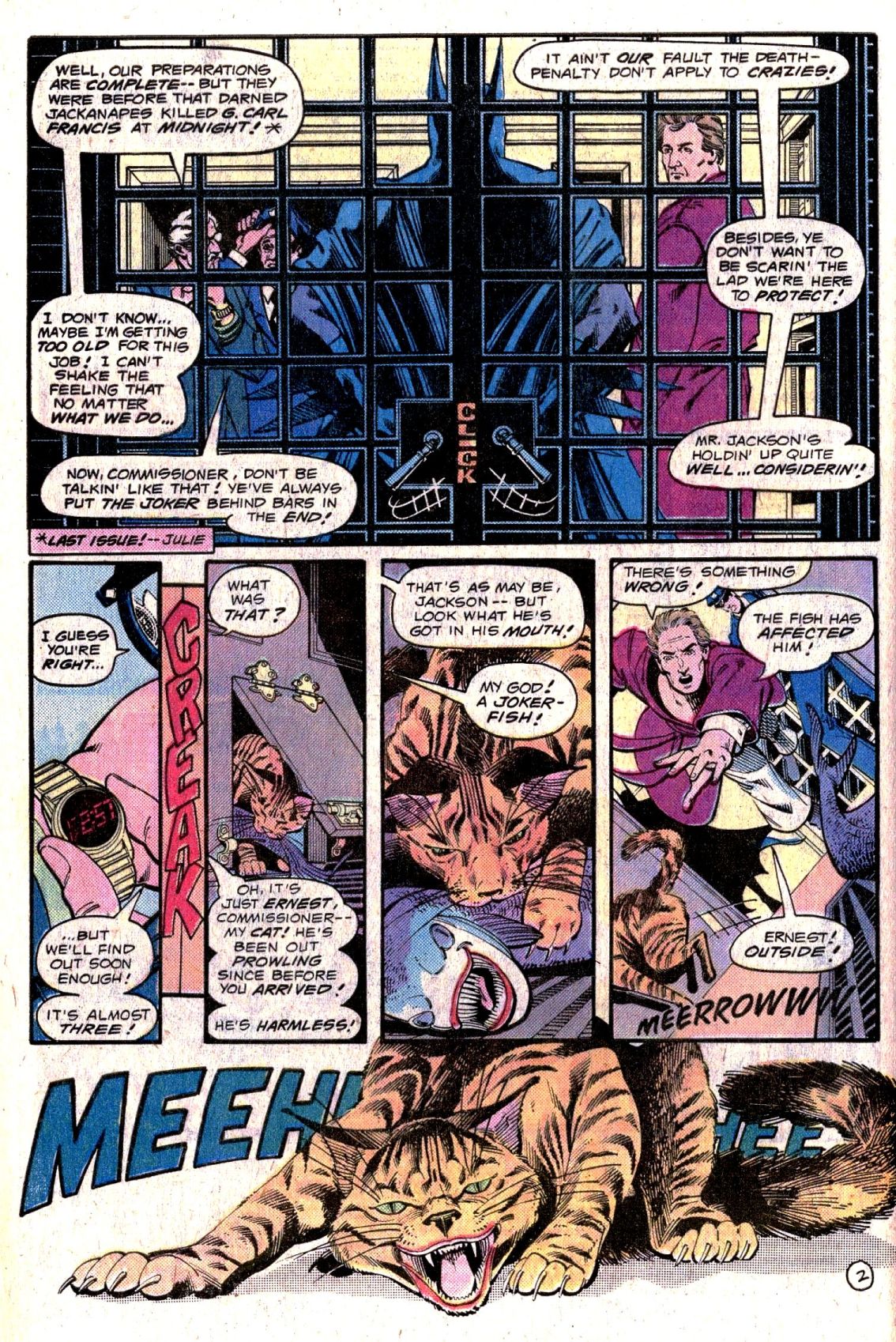 Detective Comics #476
Detective Comics #476
On the surface, ‘The Laughing Fish!/Sign of the Joker!’ is just another story in which the Joker announces he will kill specific people at a set hour, outsmarting Batman a couple of times with his ingenious assassination techniques – it’s a formula that harkens back to the very first Joker story and one that many writers have reproduced ever since.
What distinguishes the most entertaining Joker tales though, is that there is a kind of twisted logic behind his homicidal madness. In this case, the Clown Prince of Crime has dumped a chemical in the ocean that caused fish to look like him and now wants a percentage of all fish-sales, so he is murdering the heads of the Copyright Commission until they give him the requested trademark. This is at once hilarious and terrifying – because the request is impossible to satisfy, it means the Joker will just continue to kill. On the other hand, in today’s climate of transgenic patents and corporate overreach, the story looks more and more like a prescient dark satire of big business.
Marshall Rogers rocked so hard in these comics! He did a particularly amazing job with the suspenseful, claustrophobic scenes in which Batman, cops, and victims anxiously wait for the Joker to strike, not knowing what to expect (like the scene pictured above). This is also where Rogers nailed one of the most iconic Joker entrances ever, enveloped in spiralling laughter:
 Detective Comics #475
Detective Comics #475
Rogers and letterer Milton Snapinn seemed to have a nice rapport, pulling out all sorts of neat stunts. In the page below, there are letterboxes in the flying leaves, laughter sound effects that spread across panels, and the Joker’s arm piercing the paper while turning the page for the reader, with a glimpse of the following scene!
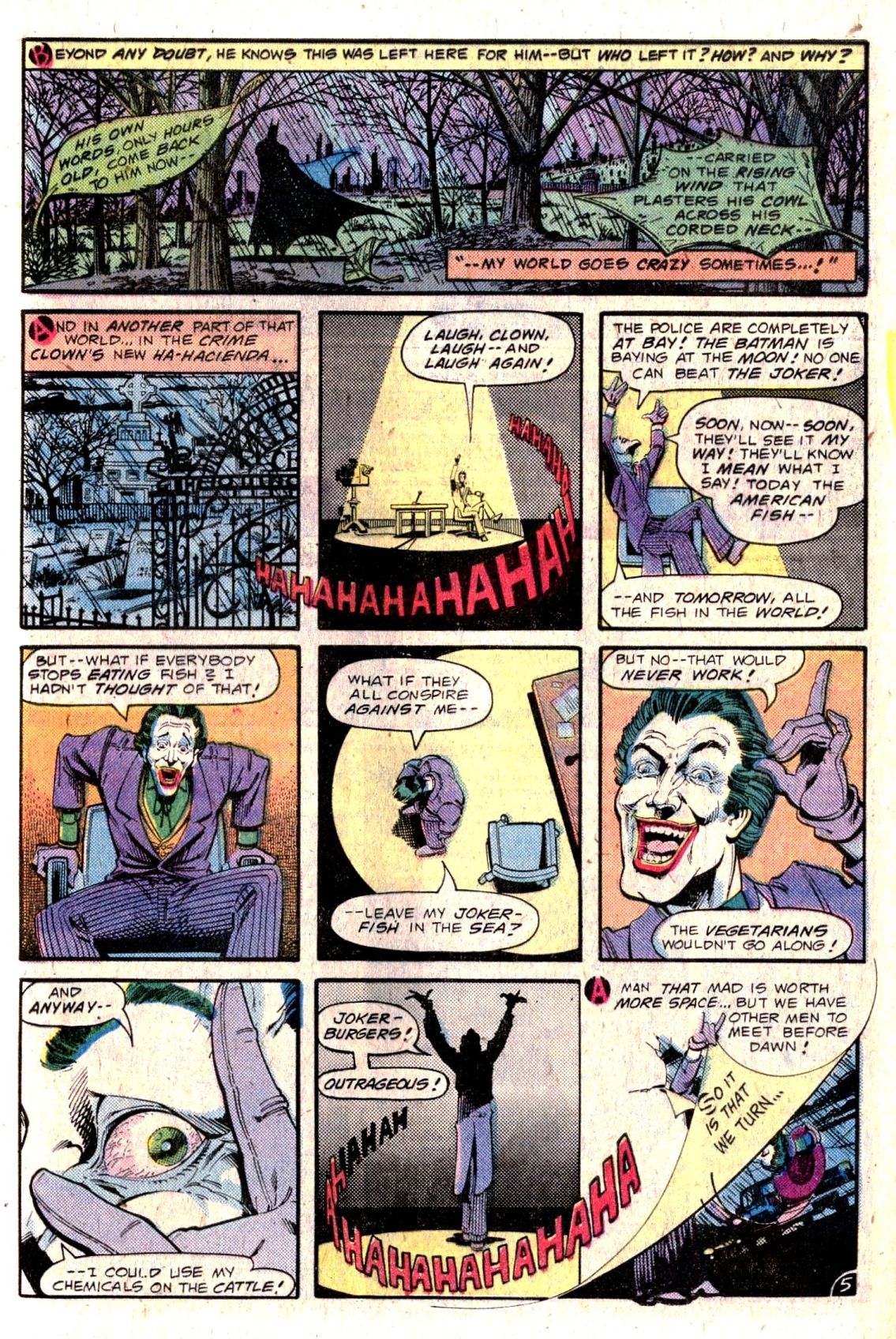 Detective Comics #476
Detective Comics #476
It’s such a shame Marshall Rogers wasn’t brought in to illustrate Englehart’s sequel, ‘The Fishy Laugh’ (Legends of the DC Universe #26-27), which got settled with the most godawful art in Trevor von Eeden’s career.
After Englehart’s departure, Rogers did just a few more stories, memorable in their own right, before taking a long break from the Batman universe. These comics included a couple of issues written by Len Wein (featuring the first appearance of Clayface III) as well as two phenomenal tales written by Denny O’Neil:
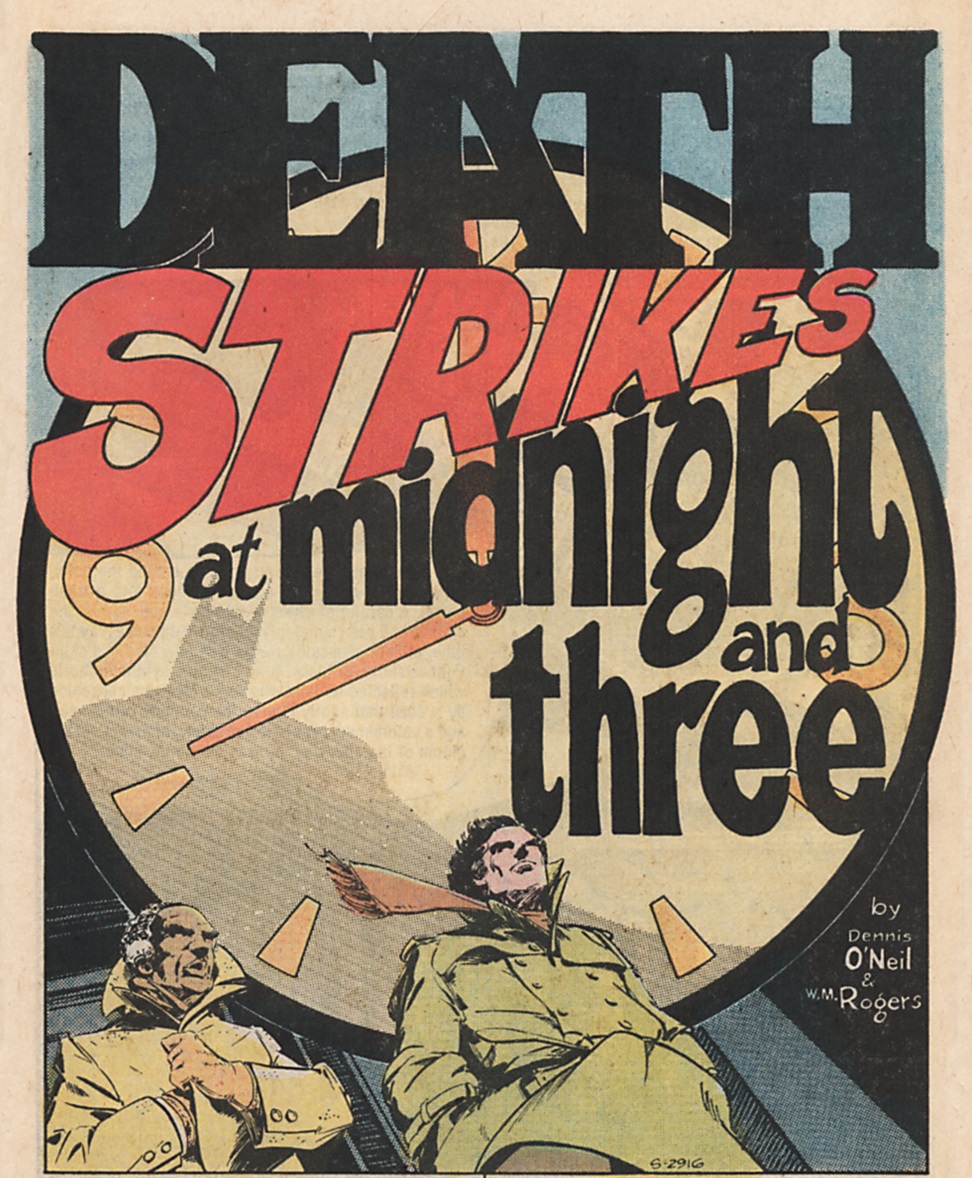 DC Special Series #15
DC Special Series #15
Having left such a firm mark on Batman comics, Rogers seemed destined to live in the shadow of his previous work as far as the Dark Knight was concerned. For a while, he only returned for special projects, including the retelling of Batman’s Golden Age origin in Secret Origins #6 and an offbeat imaginary tale under the Realworlds banner:
Since 2000, however, Marshall Rogers more than made up for his semi-absence, starting with ‘Siege’ (Legends of the Dark Knight #132-136), written by Archie Goodwin and James Robinson. This story brought Silver St. Cloud back to Gotham, which was nice, even though she served mostly as a plot device – Bruce Wayne didn’t even take her out and treat her right like a decent man would do.
Set in an undetermined period somewhere around the time Batman moved into a fashionable penthouse in the middle of Gotham City, ‘Siege’ had plenty to recommend, including its own take on Bruce’s granddad, on the origins of Wayne Manor, and on the classic story in which Thomas Wayne dressed like a bat way before his son did. Art-wise, ‘Siege’ is not that audacious, but Rogers’ impeccable sense of design shines through in quite a few sequences:
 Legends of the Dark Knight #133
Legends of the Dark Knight #133
Rogers returned, along with Silver St. Cloud, in Dark Detective, whose continuity doesn’t really fit with ‘Siege.’ In fact, Dark Detective doesn’t really fit with anything: on the one hand, it apparently takes place in the aftermath of ‘War Games,’ with Batman as persona non-grata in the eyes of the Commissioner Akins-led authorities, but on the other hand Two-Face is still deformed and Rupert Thorne has political pull, which does not match in this era. If your nerdy brain can disregard all these contradictions without exploding, though, it’s kind of a cool mini-series.
Best of all, Dark Detective reunited Rogers with Steve Englehart and Terry Austin, which made it feel like a sequel to their classic Detective Comics run. In this regard, it helped that it was not just Silver St. Cloud who was back, but also the Joker, who now wanted to become governor in a fun bit of Bush-era satire (my favorite campaign soundbyte: ‘If the presidency doesn’t have to be on speaking terms with reality, still less does the governorcy’).
In another amusing twist, this time around the victims of the Clown Prince of Crime’s killing spree were homages to popular Batman authors, like Bob Haney…
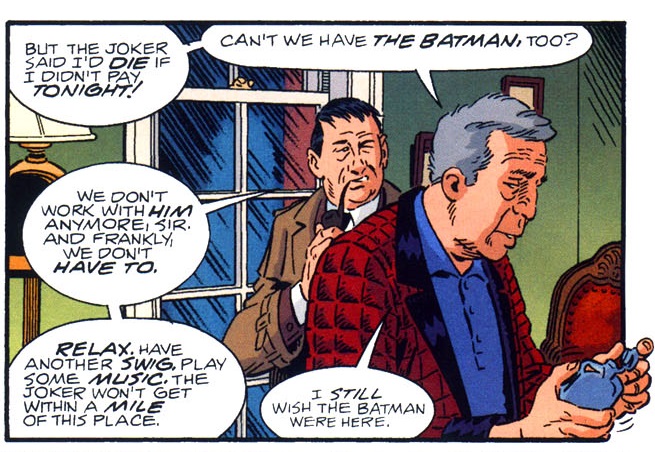 Dark Detective #2
Dark Detective #2
…and Irv Novick:
 Dark Detective #3
Dark Detective #3
By then Rogers’ style had grown cartoonier, which is not to everyone’s liking, but I would argue that his art was as slick as ever.
That said, for once Rogers was not able to lift up the material. As much as I enjoy the goofier aspects of Englehart’s script, it’s easy to see why Dark Detective didn’t become as iconic as his previous work. The earlier stories had triumphed by seamlessly combining nostalgia and modern sensibilities, but Dark Detective seemed above all a product of nostalgia, because what had felt fresh and modern about Rogers’ and Englehart’s approach in the 1970s had since then become old school.
If the original run somehow remains appealing, it’s because it feels like it belongs somewhere – the energy of the time still resonates even if it’s hard to duplicate now. It’s just like those ’70s thrillers with relentless car chases (The Last Run, The Getaway, Charley Varrick, The Driver) – they continue to feel gripping after all these years, while recent chase movies, for all their furious speed and noise, can’t capture the same magic (although Drive and Death Proof come damn close).
Then again, nostalgia can go a long way in comics. The sound effects of Joker’s laughter were enough to evoke his memorable entrance from the original run…
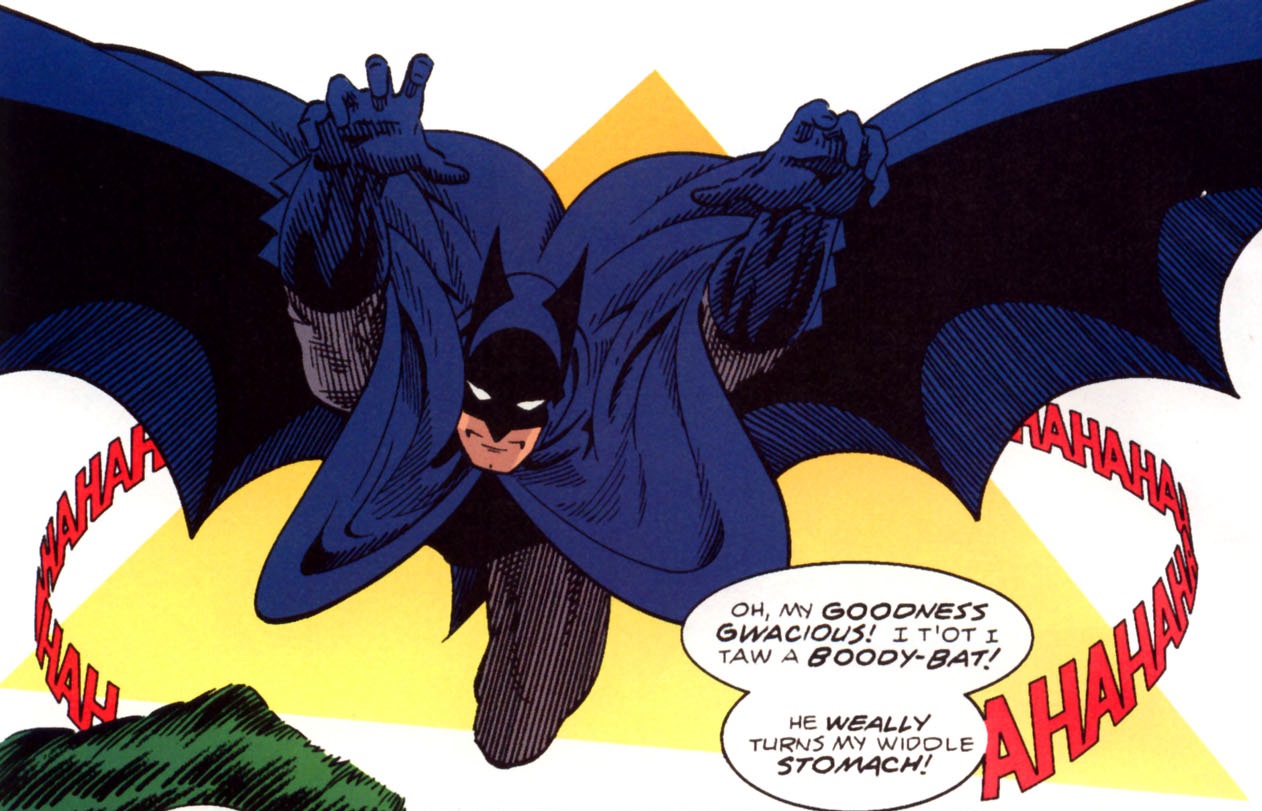 Dark Detective #1
Dark Detective #1
…and kudos to Marshall Rogers for not merely reminding us of that iconic moment, but actually trying to top it in increasingly daring ways:





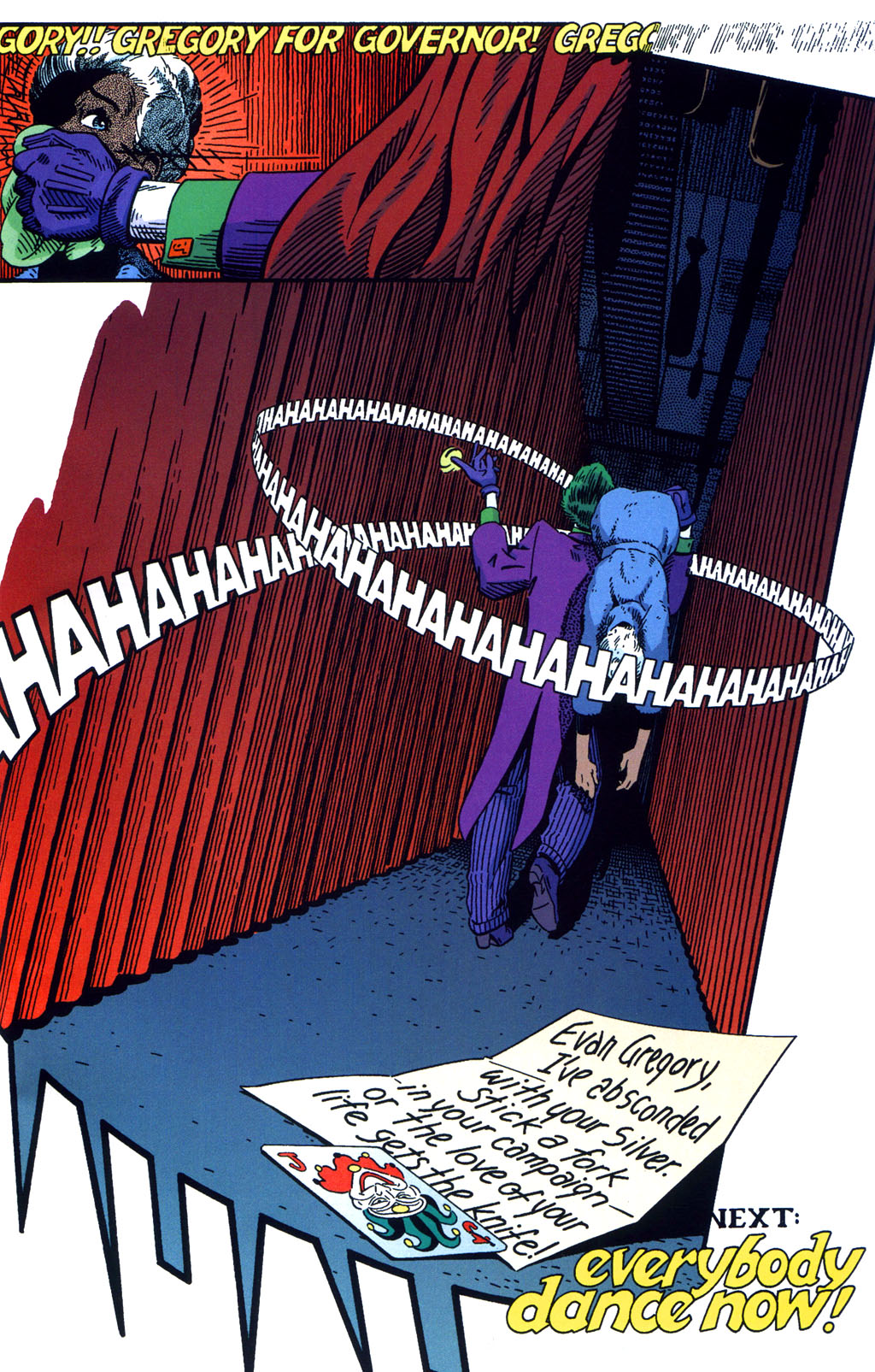
Englehart wrote a sequel to DarkKnight Detective but Rogers had passed around that time. I hear Walt Simonson was interested in doing the art but nothing came of it. I would’ve had Michael Golden do the art as he would occasionally do Batman around the same time Rogers was.
Golden is a great choice. I also certainly wouldn’t have minded seeing Simonson have a go at it… I love his work on the Gotham-set “The Judas Coin,” which he did a few years later.